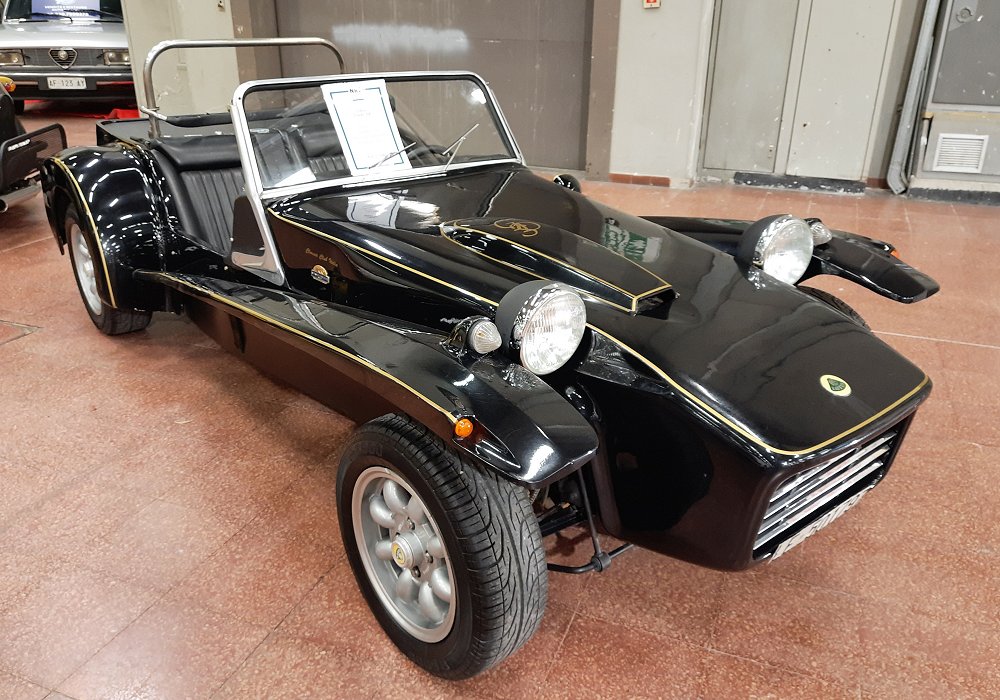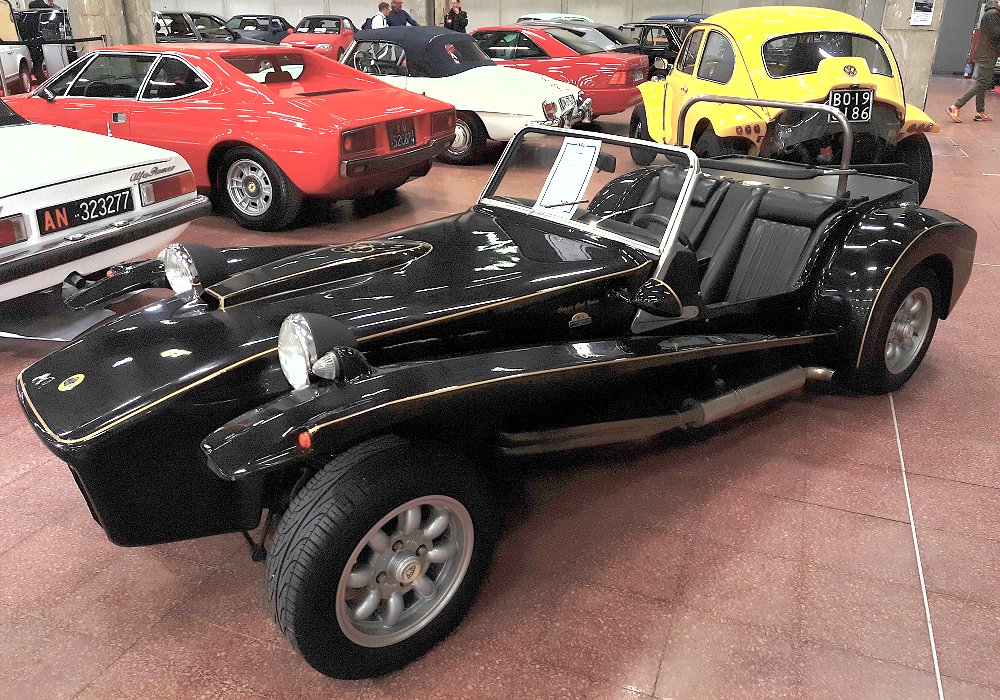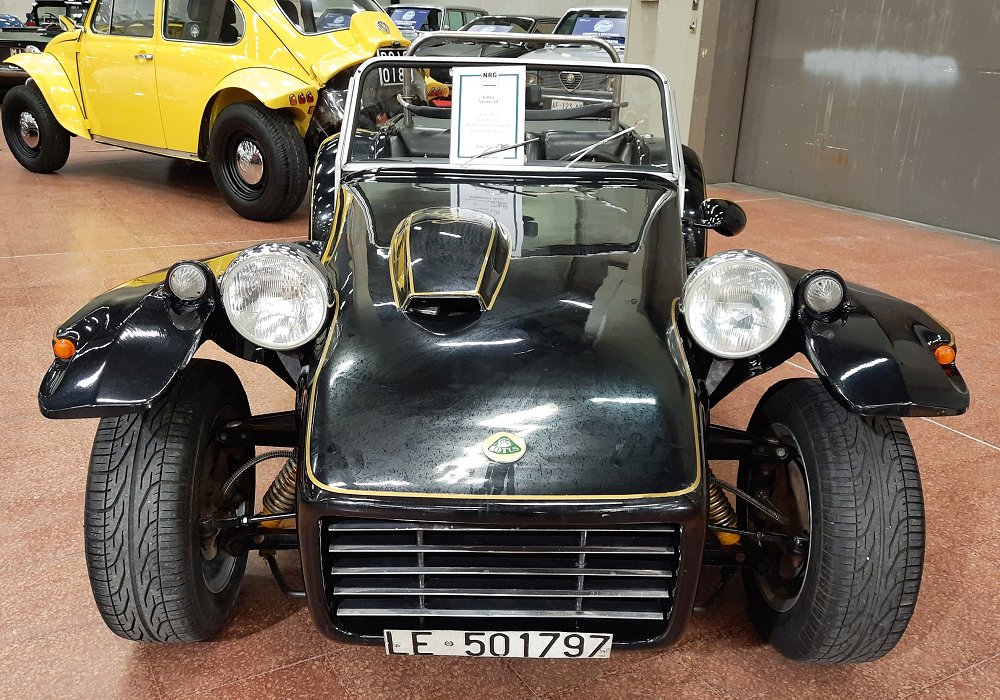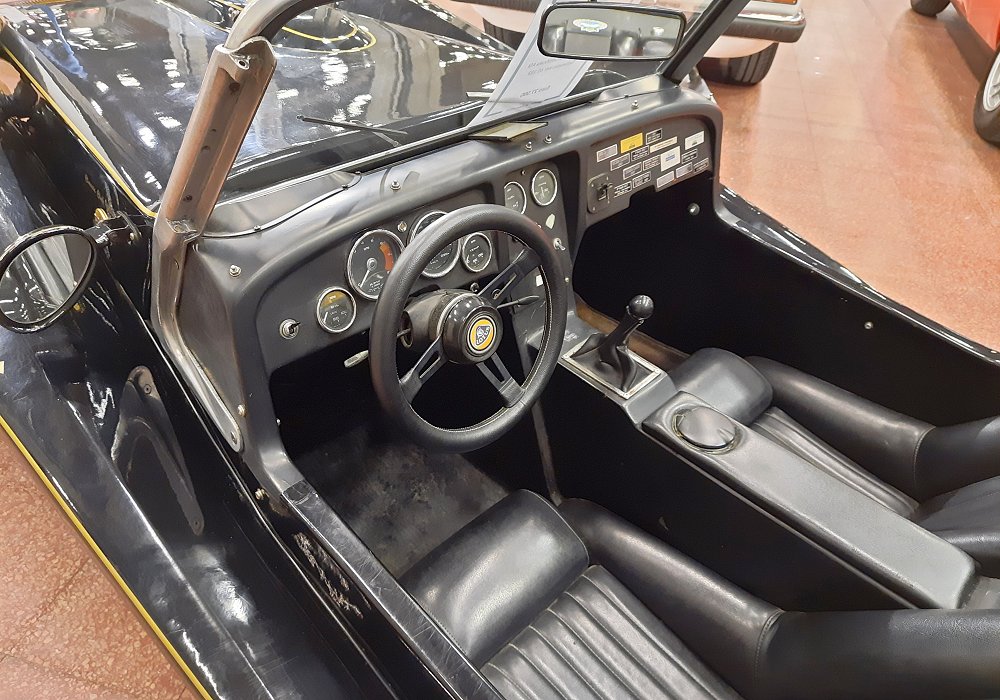Description
The Lotus Seven S4 marked both an end and a transformation for Colin Chapman’s most famous creation. Introduced in 1970, it was the final Lotus-designed version of the Seven before production passed to Caterham, and it represented Chapman’s attempt to evolve the minimalist sports car into a more modern, refined, and practical roadster while still preserving its signature lightweight performance. The result was a car that divided opinion—more civilised and aerodynamic than its predecessors, but also more complex and less raw. It was, in many ways, a bridge between eras: the last of the original Sevens and the first to hint at the evolution of the concept beyond its purist origins.
By the late 1960s, the Seven was beginning to feel dated. While its mechanical simplicity still appealed to enthusiasts, the market was shifting toward cars with more comfort and usability. Lotus, now increasingly focused on its higher-end models like the Elan and Europa, wanted to update the Seven to meet modern expectations. The S4 was therefore designed as both a technical and visual departure from the earlier, angular Sevens. It featured a completely new body made largely of fiberglass, giving it smoother, more aerodynamic lines while retaining the classic open-wheel layout that defined the car’s character.
The new bodywork was wider, squarer, and more enclosed than before. The long, narrow nose of the earlier Sevens gave way to a more integrated design with faired-in headlights and a smoother, more substantial front profile. The cockpit was also enlarged, providing greater comfort and better weather protection for both driver and passenger. The rear section was redesigned with a proper boot lid, allowing for practical storage—a feature earlier models had essentially ignored. The new fiberglass construction reduced the number of visible seams and rivets, giving the car a more cohesive, contemporary look.
Under the skin, however, the Seven S4 stayed true to the Lotus philosophy. It was built on a space frame chassis similar in concept to its predecessors, though with revised dimensions to accommodate the larger body and new engine options. The design remained light and strong, maintaining the Seven’s reputation for agility and sharp handling. Depending on specification, the S4 weighed between 545 and 600 kilograms—slightly more than the S3 but still featherweight by contemporary standards.
The S4 was offered with a variety of engines, primarily sourced from Ford. The entry-level model used the 1,299 cc Kent Crossflow engine producing around 84 horsepower, while the more powerful versions employed the 1,599 cc and 1,710 cc Ford Twin Cam units, tuned by Lotus to deliver up to 125 horsepower in top specification. This engine, also used in the Lotus Elan, gave the S4 strong performance—0 to 60 mph in under seven seconds and a top speed around 115 mph, depending on gearing and tune. These figures put it on par with or ahead of much more expensive sports cars of the period.
Power was sent to the rear wheels through a close-ratio four-speed manual gearbox, while suspension remained simple and effective. The front used double wishbones and coil springs, and the rear employed a live axle located by trailing arms and coil springs. This layout, perfected over the Seven’s long evolution, gave the S4 its trademark handling: neutral, responsive, and endlessly communicative. The steering was unassisted and quick, allowing the driver to feel every nuance of grip and surface texture.
The driving experience of the S4 differed subtly from earlier models. The added weight and broader body gave it slightly more stability and comfort, particularly at higher speeds, but also softened some of the raw immediacy that had made the S2 and S3 so beloved by purists. The car felt a touch more planted and forgiving, though still incredibly nimble by any standard. The engine’s crisp throttle response, combined with the short gearing and light clutch, made it perfect for both backroad driving and track use.
Inside, the S4 offered a slightly improved level of comfort. The wider cabin provided more shoulder room, and the dashboard layout was neater and more modern. Basic weather equipment was improved, with a proper folding roof and better sealing against wind and rain. The seats remained minimalist but were more supportive, and the addition of a small heater made the car more tolerable in cold weather. Despite these concessions, the S4 was still unmistakably a driver’s machine—focused, noisy, and direct.
While the S4 was mechanically and dynamically impressive, its styling proved divisive. Many traditional Lotus enthusiasts missed the exposed, insect-like appearance of the earlier cars and found the new fiberglass body too heavy-handed and inelegant. Others appreciated its modernity and improved comfort. Sales were modest compared to the S3, and by 1972, production ended after roughly 600 units had been built.
That same year, Chapman made a pivotal decision: Lotus would withdraw from the Seven project altogether to focus on higher-volume and higher-margin models. The rights to the design were sold to Caterham Cars, which returned to producing the simpler, lighter S3-style body and chassis. Under Caterham’s stewardship, the Seven would go on to become one of the longest-lived and most successful sports car designs in history, with its DNA still visible in every modern Caterham built today.
Today, the Lotus Seven S4 occupies a unique place in the Seven lineage. It is both the most advanced and the most controversial of the Lotus-built models—a car that sought to modernize a legend without betraying its spirit. Collectors regard it as rare and historically significant, a snapshot of Lotus in transition from small-scale enthusiast manufacturer to global engineering powerhouse. Its fiberglass body and distinctive shape make it instantly recognizable, and well-preserved examples have gained new appreciation among enthusiasts who admire its blend of Lotus ingenuity and late-1960s futurism.
The Lotus Seven S4 was, ultimately, a bold experiment. It may not have achieved the enduring simplicity of its predecessors, but it demonstrated Chapman’s willingness to evolve even his most beloved designs in pursuit of progress. It was the Seven’s final metamorphosis under Lotus—a car that combined old-world purity with a glimpse of modernity, marking the close of one era and the beginning of another in the timeless story of the Seven.






